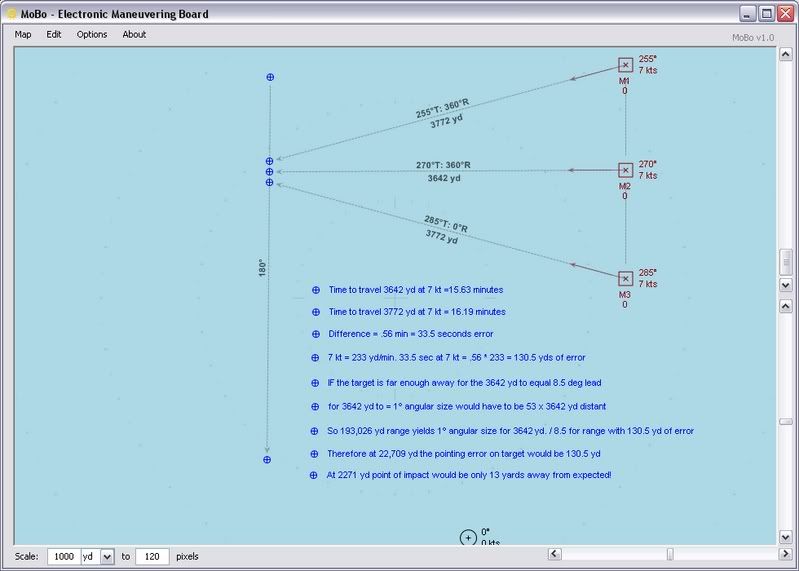OK, check out this, where I reduced it to the number of yards the aiming point is off. It depends on knowing that for something to have an angular size of 1º it has to be approx 53 times further away than its length. This derives from the definition of a cotangent. So we know if something is really 1" wide and it is 1º wide with our periscope, it is 53 inches away. Cool, huh? MoBo time! I'll learn this thing yet.

It's just another way to look at the problem, figuring out how far off our aiming point is in yards. At over a mile distance, we're 13 yards off at a 15º error. Not too shabby!
Proviso: aaronblood says the error is about 2º, or in our scenario here (3642/85)*2 = 85.7 yards error at 2271 yards range. You know what? With a nice size ship at 300 yd long, whoever's right you just hit it! If you fired a nice 3 torpedo 1º spread you just sunk it from a mile away! From 700 yards this is devastating. Let the carnage begin!
Edit: Both MoBo and Intercalc, which share the same characteristic of rounding to the nearest degree, show that my prediction of an error of a fraction of a degree is correct with a 15º error in couse from a perfect right angle. Shoot with confidence that your speed measurements are critical, your angular measurements a lot less so long as actual angles are within plus or minus 15º of your estimate. Outside of that, your aim deviates quickly!